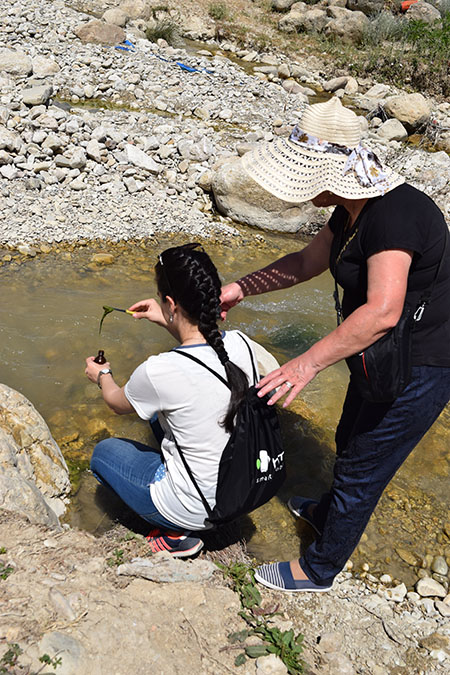
Systematic monitoring is one of the important issues in order to reduce the biodiversity observed in nature and prevent the extinction of species in order to properly implement targeted conservation strategies. For this purpose, in June of this year, the staff of the Laboratory of Algology and Lichenobriology of the Institute of Botany of ANAS conducted extensive monitoring in Shabran region for the study of alflora and lichenobriological assessment of forest ecosystems.
The main purpose of the monitoring was to determine the condition of algae in rivers and lakes affected by anthropogenic influences in the region and their distribution in
continental aquifers, study of individual systematic groups of regional algae flora by modern methods and bioecological features, as well as plant diversity. During the expedition to Shabran region, lichenfloristic and biological research was carried out on 12 routes.
Head of the Laboratory of Algology and Lichenobriology, Ph.D. Sheker Mukhtarova, Ph.D. Sevda Alverdiyeva and Ph.D. Aygun Mammadova visited Gilvar, Sinjanboyat, Galagah, Gulenli, Budig, Jimi, Takhtalar, Dagbirji, Zohrami, Pirabadil and others of Shabran region. Alkalological, lichenological and biological samples were taken from the villages.
Also, 78 copies of biological biological herbarium samples were collected, and bioecological species belonging to epiphyte, epilith, epigei groups were observed. It was found out that Clorophyta and Cyanophyta species predominate in Zeyva river and Sarin, Istisu, Gilvar springs.
In addition, 26 algae samples were collected using generally accepted methods and brought to the laboratory for identification.